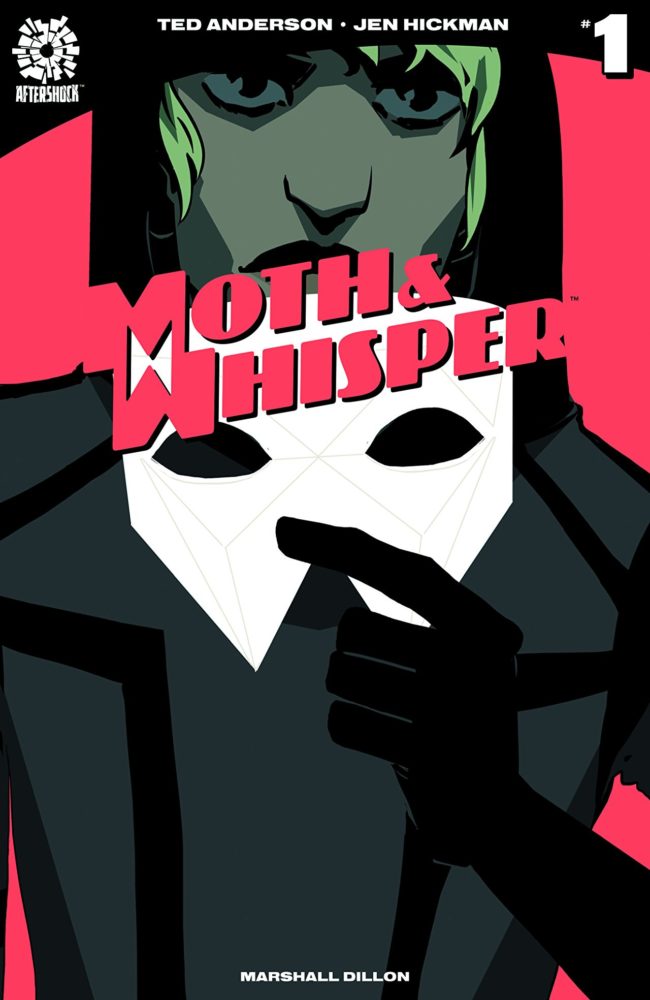Interview with alumna Jen Hickman, the artist behind ‘Moth and Whisper’

SCAD sequential art alumna Jen Hickman is currently drawing the serial science-fiction comic “Moth and Whisper,” written by Ted Anderson and published by Aftershock Comics, since September. The Connector interviewed Hickman about her process and the experience of working on the comic.
The Connector: Have you worked with Ted Anderson before, and if you have, how does “Moth and Whisper” differ from your previous projects?
Hickman: Ted and I did a pitch together a couple years ago that hasn’t yet found a home. Then in 2017 we did an “Amazing World of Gumball” short story together. “Moth and Whisper” is obviously a much bigger project, and it’s set in a science-fiction world, so there was a lot of invention and design work to be done — as well as world building exposition in both the writing and the art, in addition to telling the story. That was really fun, actually.
The Connector: What is your creative process like?
Hickman: It’s probably pretty standard. I do design work first, so that I get used to what shapes things and people will have — and so that the environments can feel more developed as characters move through them. Then I thumbnail, rough, ink and color. These days I’m working entirely digital, so it’s easy enough to make changes at every step.
The Connector: The character Niki changes appearances a lot throughout the comic. How did you work out so many different types of faces and bodies while still making it feel like one character?
Hickman: The simple answer is that I made sure each disguise was distinct from the previous one in some major way — I use age, height, race or gender. And I showcase the disguise as technology’s capabilities, and to highlight Niki’s excellent acting skills. So it was really just a sequence of “well, if this one looks like this, then the next one must look completely different.”
The Connector: What are your visual inspirations?
Hickman: I have so many! I’ve been obsessing over Chris Samnee’s inking recently. And, I always go back to Ramón Pérez’s work — both for his character acting and his page layouts. I also have to say that ever since I started playing immersive sim video games, I’ve begun paying better attention to environments in my own work. So games like “Dishonored” or “Deus Ex” have helped me get better at drawing, instead of being just a fun hobby.
The Connector: What is the biggest challenge you’ve experienced while drawing this comic?
Hickman: This isn’t really a new challenge, but fight choreography is always stressful for me. There wasn’t a ton of it in “Moth & Whisper,” but every now and then, there’d be a physical conflict — it would take me forever to plan out the shot calls, where people are standing in the space, where they move to, what actions get taken, etc. I think it’s because I always want things to be believable, as much as I want things to be very clear for the reader.
The Connector: Do you have any advice for SCAD students who want to work in comics?
Hickman: The biggest thing that has helped me is to have a solid group of peers in about the same place as me in the industry. We can compare notes on working with various publishers, give each other feedback when we need it and celebrate each other’s victories. I met most of my cohort while I was at SCAD. So, my advice is to look around you at the other students who want to make comics, realize that these will be the people coming up with you in the industry and really actively put work into those relationships.
























